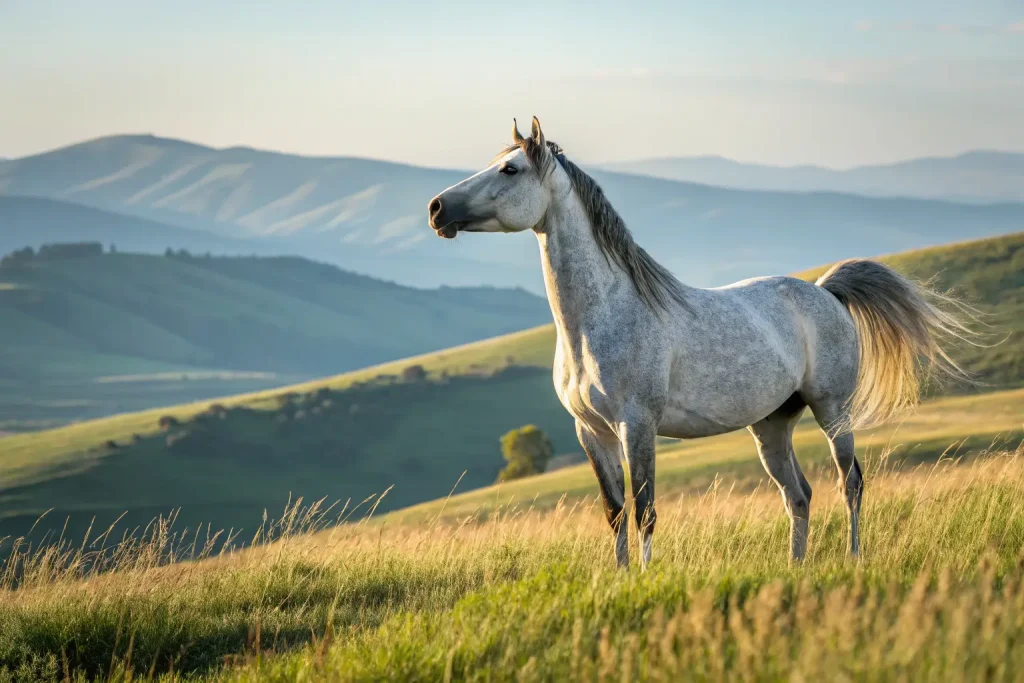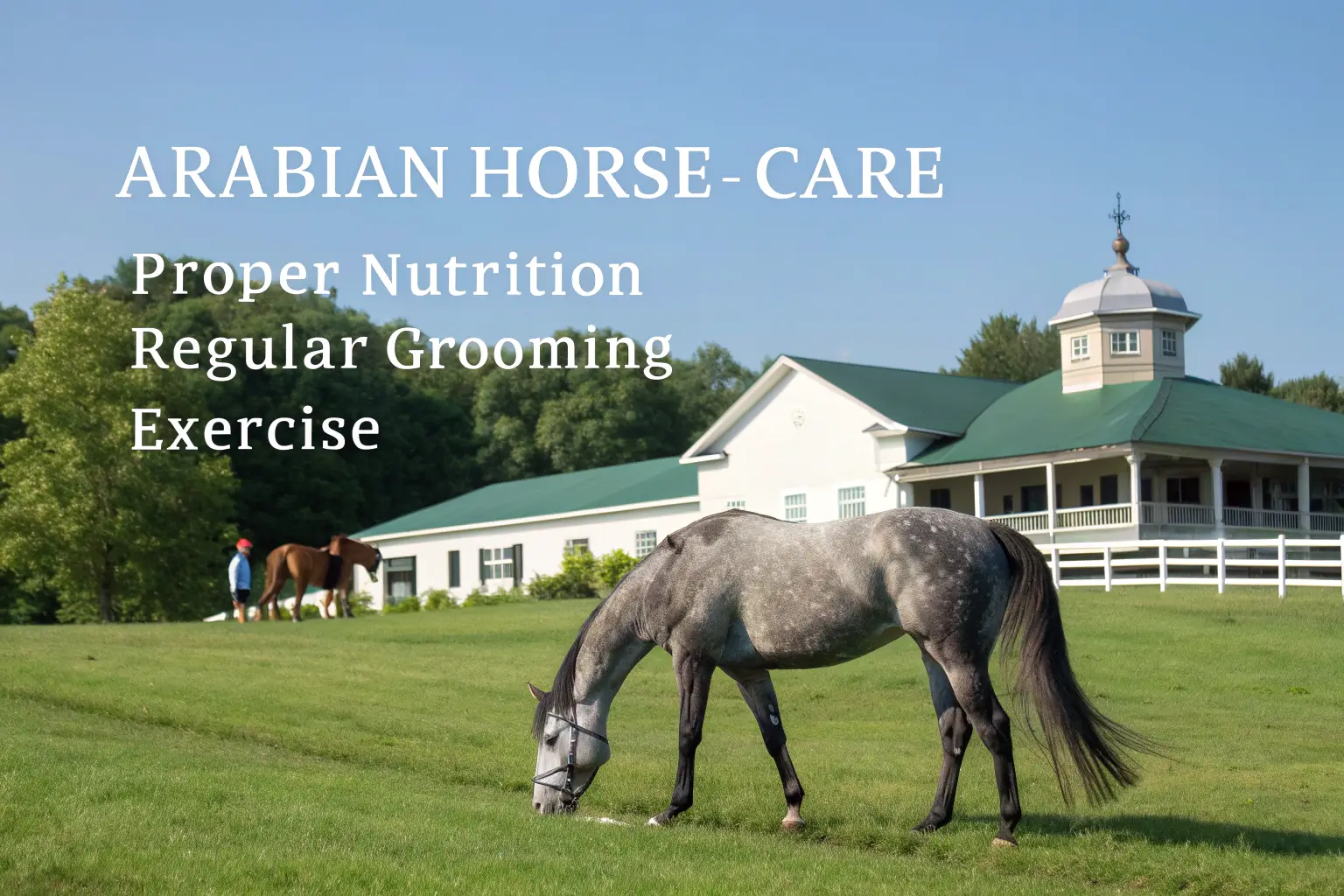How to Care for Your Arabian Horses: 9 Essential Tips
Introduction
Arabian horses stand as living legends among equines—revered for their distinctive dished faces, high tail carriage, and extraordinary endurance. These magnificent creatures have captivated horse enthusiasts for thousands of years, with bloodlines tracing back to the Arabian Peninsula’s deserts. Caring properly for these remarkable Arabian horses requires specialized knowledge that honors both their ancient heritage and unique physiological needs.
The relationship between humans and Arabian horses dates back to approximately 4,500 B.C., making them one of the oldest horse breeds in existence. Their care isn’t merely about maintenance—it’s about fostering a profound connection with animals whose ancestors carried Bedouin warriors across unforgiving desert landscapes and influenced virtually every modern light horse breed.
Did you know that Arabian horses possess one less vertebra than other equines? This unique skeletal structure contributes to their distinctive appearance and exceptional athletic ability, but also necessitates specialized care approaches that we’ll explore throughout this guide.
Species Overview
Scientific Name: Equus ferus caballus
Arabian horses belong to the same species as all domestic horses but represent one of the most ancient and genetically distinct breeds within the equine family.
Physical Characteristics
Arabian horses typically stand between 14.1 to 15.1 hands high (57-61 inches at the withers), making them medium-sized compared to other horse breeds. Their most distinguishing features include:
- A distinctively concave (dished) facial profile
- Large, expressive eyes set wide apart
- Small, alert ears
- A broad forehead and large nostrils
- High tail carriage
- Compact, refined body structure
- Fine skin and coat that shows underlying blood vessels
- Colors commonly include bay, black, chestnut, and gray
Arabian horses possess exceptional bone density despite their seemingly delicate appearance. Their skin is notably thin compared to other breeds, making them both more sensitive to environmental conditions and more expressive in their reactions.
Subspecies and Strains
While not technically subspecies, Arabian horses have developed into several distinct strains based on their geographic origins:
- Egyptian Arabians: Known for their extreme refinement and dished faces
- Polish Arabians: Valued for their athletic ability and substance
- Russian Arabians: Prized for their size and strength
- Spanish Arabians: Appreciated for their robust build and gentle temperament
- American/Domestic Arabians: Often blending various bloodlines
- Crabbet Arabians: Named for the famous Crabbet Park Stud in England, known for soundness and trainability
Each strain has subtle differences in appearance and temperament that can influence care requirements.
Habitat and Distribution
Natural Habitat
Arabian horses evolved in the harsh desert climate of the Arabian Peninsula, which shaped many of their distinctive characteristics. This environment, with its extreme temperature fluctuations, scarce water, and limited forage, produced horses with incredible endurance, efficiency in movement, and exceptional lung capacity.
Geographic Range
Today’s Arabian horses are distributed globally, thriving in diverse climates from the desert heat of the Middle East to the cold winters of Scandinavia. Major populations exist in:
- United States (largest Arabian population outside the Middle East)
- Middle Eastern countries (particularly UAE, Saudi Arabia, Qatar, and Jordan)
- Europe (especially Poland, Spain, and the United Kingdom)
- Australia
- South America (with significant breeding programs in Brazil and Argentina)
Adaptations
Arabian horses developed remarkable adaptations that continue to influence their care needs:
- Efficient cooling systems and exceptional heat tolerance
- Dense bone structure despite refined appearance
- Large nostrils and lung capacity for oxygen efficiency
- Ability to maintain condition with less food than other breeds
- Natural hardiness and disease resistance
- Exceptional endurance and recovery capabilities
These adaptations make Arabians particularly well-suited for endurance disciplines but also necessitate specific considerations in their daily care.
Diet and Feeding Habits

What Arabian Horses Eat
A balanced diet for Arabian horses typically includes:
- High-quality forage: Grass hay or alfalfa (lucerne) should form the foundation of their diet
- Limited concentrates: Arabians are typically “easy keepers” requiring less grain than other breeds
- Essential supplements: Vitamins, minerals, and salt to compensate for any nutritional gaps
- Fresh, clean water: Arabians need constant access to water, consuming 5-10 gallons daily depending on activity level and climate
Foraging Behavior
Arabian horses evolved as browsers and grazers in sparse desert environments. This has influenced their eating habits:
- They’re naturally selective eaters, often seeking the most nutritious parts of plants
- They evolved to consume small amounts frequently rather than large meals
- Their digestive systems are adapted to extract maximum nutrition from minimal forage
- They may appear to “nibble” rather than consume large mouthfuls like some draft breeds
Dietary Needs
Due to their desert heritage, Arabian horses have specific nutritional considerations:
- Lower caloric requirements: Many Arabians require approximately 20% fewer calories than horses of similar size
- Protein sensitivity: Excess protein can cause excitability in some Arabian bloodlines
- Hydration awareness: Their desert heritage makes proper hydration critically important
- Metabolic concerns: Some Arabian bloodlines are predisposed to metabolic issues requiring careful diet management
A feeding program of primarily forage with carefully selected supplements typically maintains optimal condition in Arabian horses. Adjustments should be made based on individual metabolism, activity level, and environmental conditions.
Behavior and Social Structure
Social Behavior
Arabian horses are known for their strong human bonds and social intelligence:
- Highly social animals that form strong attachments to both horses and humans
- Natural herd animals that can experience stress when isolated
- Hierarchical social structures with clear leadership patterns
- Exceptional intelligence that manifests in their responsiveness and problem-solving abilities
- Strong maternal instincts and family bonds
Their intelligence and sensitive nature make them particularly responsive to consistent, gentle handling approaches.
Communication
Arabians are notably expressive in their communication:
- Highly vocal with a range of distinct vocalizations (nickers, whinnies, snorts)
- Expressive facial movements enhanced by their thin skin and large eyes
- Alert ear positioning that clearly telegraphs attention and mood
- Tail carriage that indicates emotional state (higher carriage often correlates with excitement or alertness)
- Body language that readily communicates confidence, fear, playfulness, or aggression
Their communication style makes them transparent partners but requires handlers to be equally clear and consistent in their own signals.
Mating and Reproduction
Arabian horses have several distinctive reproductive characteristics:
- Sexual maturity typically occurs between 1-2 years, though breeding is usually delayed until 3-4 years
- Mares average 11-month gestation periods
- Strong maternal instincts with protective behavior toward foals
- Foals typically stand within 1 hour of birth and exhibit remarkable coordination
- Breeding programs often emphasize preservation of specific bloodlines and traits
- Natural fertility with relatively few reproductive issues compared to some selectively bred horse populations
Responsible breeding focuses on maintaining genetic diversity while preserving the distinctive qualities that define the breed.
Conservation Status
Current Status
Arabian horses are not endangered, with global population estimates exceeding 1 million registered purebreds. However, certain historical bloodlines face conservation challenges.
Threats
While not endangered as a breed, Arabian horses face several preservation challenges:
- Genetic bottlenecking in certain exclusive bloodlines
- Loss of historical strain characteristics through indiscriminate crossbreeding
- Market fluctuations affecting breeding decisions
- Inbreeding in some populations leading to genetic disorders
- Shifting emphasis from functional traits to extreme aesthetic features
Conservation Efforts
Several organizations work to preserve Arabian horse heritage:
- The World Arabian Horse Organization coordinates international preservation efforts
- Strain-specific preservation programs in countries like Egypt, Poland, and Spain
- Gene banks preserving genetic material from significant bloodlines
- Educational programs promoting understanding of historical Arabian horse characteristics
- Performance testing programs that maintain focus on the breed’s traditional strengths
These efforts aim to balance modern breeding practices with preservation of the qualities that have made Arabian horses remarkable for millennia.
Interesting Facts
- Arabian horses are the only breed that naturally produces the “gisrah” movement—a floating trot prized in dressage.
- The Arabian breed has influenced virtually every light horse breed in existence, including Thoroughbreds, Quarter Horses, and Warmbloods.
- Their skeletal structure includes 17 ribs instead of the typical 18, and 5 lumbar vertebrae instead of 6, contributing to their distinctive appearance and movement.
- Arabian horses have been exchanged as diplomatic gifts between world leaders for centuries, including presentations to George Washington and Napoleon Bonaparte.
- The breed’s mitochondrial DNA shows remarkably little change over thousands of years, indicating careful preservation of maternal bloodlines.
- Unlike many breeds, purebred Arabians never come in pinto, palomino, or true silver dapple colorations.
- The hollow nature of their bones (adapted for desert heat dissipation) makes them pound-for-pound stronger than breeds with solid bone structure.
- Their exceptional endurance allows them to dominate competitive long-distance riding, where 100-mile races are common.
Tips for Caring for Arabian Horses

1. Provide Appropriate Shelter and Turnout
Arabian horses benefit from:
- Access to shade during hot weather due to their thin skin
- Protection from extreme cold and wet conditions
- Regular turnout for mental well-being and exercise
- Secure fencing (they’re notoriously clever about escaping)
- Companionship from other horses or compatible animals
Pro Tip: Create microclimate options within their living space—areas with varying degrees of sun, shade, and wind protection allow them to self-regulate their comfort.
2. Implement Proper Nutrition Management
Feeding Arabian horses effectively requires:
- Consistent feeding schedules to prevent digestive upset
- Primarily forage-based diets with minimal concentrates
- Small, frequent meals rather than large feedings
- Careful monitoring of weight and body condition
- Appropriate supplementation based on individual needs
Pro Tip: Use slow-feed hay nets to extend foraging time and prevent boredom while more closely mimicking natural feeding patterns.
3. Establish Consistent Training Approaches
Training approaches should consider their intelligence and sensitivity:
- Consistent, fair handling from an early age
- Positive reinforcement techniques that reward desired behavior
- Clear communication with gradual building of expectations
- Variety in training to engage their intelligent minds
- Patience with their naturally spirited temperament
Pro Tip: Arabians often respond better to being “asked” rather than “told”—offering choices within boundaries can increase their willingness to cooperate.
4. Practice Appropriate Grooming
Arabian horses require specialized grooming attention:
- Gentle products appropriate for their sensitive skin
- Regular checking of fine-skinned areas for irritation
- Careful monitoring of feet due to their dense hoof structure
- Protection from insects to which they may be more sensitive
- Sunscreen on pink-skinned areas for light-colored Arabians
Pro Tip: Use grooming time as bonding time—Arabians generally enjoy the social aspect of grooming when approached patiently.
5. Maintain Preventative Health Protocols
Health maintenance should include:
- Regular veterinary check-ups (at least annually)
- Consistent dental care (every 6-12 months)
- Appropriate vaccination protocols for your region
- Customized deworming program based on fecal testing
- Monitoring for breed-specific health concerns
Pro Tip: Keep detailed health records including reaction to medications, as Arabians sometimes show sensitivity to certain pharmaceutical compounds.
6. Provide Mental Stimulation
Keep their intelligent minds engaged through:
- Varied routines and environments
- Regular human interaction
- Training that includes problem-solving elements
- Compatible equine companions
- Regular but varied exercise regimens
Pro Tip: Teaching Arabians tricks or liberty work often satisfies their intelligence while strengthening your bond.
7. Address Exercise Requirements
Maintain physical wellness through:
- Regular exercise appropriate to their fitness level
- Gradual conditioning for any competitive pursuits
- Varied activities that engage different muscle groups
- Careful warm-up and cool-down protocols
- Recognition of their natural endurance capabilities
Pro Tip: Arabians excel at activities requiring endurance and agility—trail riding, endurance competition, and dressage often suit their natural talents.
8. Practice Heat and Cold Management
Due to their desert origins:
- Monitor for overheating during exercise, especially in humid climates
- Provide appropriate cooling methods after exercise
- Use appropriate blankets during cold weather
- Ensure adequate hydration year-round
- Consider clipping for heavily sweating horses in work during winter
Pro Tip: Teach your Arabian to drink from various water sources during training to ensure proper hydration during travel or competition.
9. Develop Trust-Based Relationships
Build strong partnerships through:
- Consistent, fair handling
- Respect for their sensitive nature
- Regular positive interactions beyond work
- Clear boundaries and expectations
- Recognition of their individual personality
Pro Tip: Arabians thrive with handlers who approach them as partners rather than subordinates—this cooperative approach typically yields better results than dominance-based methods.
Role in the Ecosystem
Ecological Importance
While domestic Arabian horses don’t have a natural ecosystem role today, they have played significant parts in:
- Historic land management through grazing in their native regions
- Human migration patterns throughout the Middle East and North Africa
- Cultural development of Bedouin societies
- Agricultural development in various regions
- Transportation systems before motorized vehicles
- Military history throughout the ancient and modern world
Impact of the Breed
The Arabian breed has had profound impacts beyond ecological considerations:
- Genetic influence on almost all modern light horse breeds
- Cultural significance in art, literature, and mythology
- Economic importance in regions where they’re bred
- Sporting contributions to equestrian disciplines worldwide
- Historical influence on trade routes and military campaigns
Their significance extends far beyond practical utility into cultural identity for many groups, particularly in the Middle East.
Conclusion
Caring for Arabian horses transcends basic husbandry—it’s about honoring a living legacy that spans thousands of years. These remarkable animals combine seemingly contradictory qualities: delicate yet tough, sensitive yet bold, refined yet enduring. Their unique physiological and behavioral characteristics demand specialized care approaches that respect both their desert heritage and their remarkable adaptability.
Whether you’re a new Arabian horse owner or considering bringing one into your life, understanding these nine essential care tips provides the foundation for a rewarding partnership. These horses don’t merely tolerate human companionship—they actively seek it, often forming bonds that last a lifetime.
As stewards of this ancient breed, we carry the responsibility to preserve not just their physical well-being but the qualities that have made them extraordinary for millennia: their intelligence, sensitivity, endurance, and beauty. Through proper care that honors their unique nature, we ensure these living legends continue to inspire future generations.
Frequently Asked Questions
Are Arabian horses suitable for beginners?
While some individual Arabians make excellent beginner horses, as a breed, they’re typically better suited for intermediate riders. Their sensitivity, intelligence, and quick reactions can challenge inexperienced handlers. Look for older, well-trained individuals if you’re new to horses, and always work with experienced trainers who understand the breed’s unique characteristics.
How much exercise do Arabian horses require?
Arabians need regular exercise—typically 4-6 days weekly—but quality matters more than quantity. Their natural endurance means they benefit from varied activities rather than repetitive work. A combination of arena training, trail riding, and free movement in turnout helps maintain physical and mental health. Always match exercise intensity to their conditioning level.
What health issues are common in Arabian horses?
Certain conditions appear more frequently in Arabians, including Severe Combined Immunodeficiency Disorder (SCID), Cerebellar Abiotrophy (CA), Lavender Foal Syndrome (LFS), and Guttural Pouch Tympany. Metabolic concerns like Equine Metabolic Syndrome and insulin resistance also appear in some bloodlines. Genetic testing for breeding stock and regular veterinary monitoring help manage these risks.
Do Arabian horses cost more to maintain than other breeds?
Not necessarily. While purchase prices vary widely, maintenance costs can actually be lower due to their “easy keeper” nature, requiring less feed than larger breeds. However, their sensitivity may result in higher costs for specialized care products, appropriate tack, and experienced training. Initial investment in proper education about their unique needs pays dividends in prevention of future problems.
How long do Arabian horses typically live?
Arabian horses commonly live 25-30 years, with many individuals reaching their early thirties with proper care. Their longevity exceeds that of many larger breeds, meaning they often provide companionship for decades. This long lifespan makes thoughtful purchase decisions and consistent healthcare investments particularly important.
Can Arabian horses live outdoors year-round?
Many Arabians adapt well to living outdoors with appropriate shelter and management. Their desert heritage makes them resilient, though their thin skin requires protection from extreme elements. Providing windbreaks, shade, appropriate blanketing during inclement weather, and regular monitoring helps them thrive in various climates when acclimated gradually.







